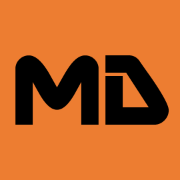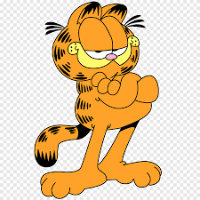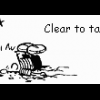Leaderboard
Popular Content
Showing content with the highest reputation on 02/06/21 in all areas
-
Howdy everyone, Thought you wouldn`t mind if I showed you some pic`s of my latest effort Tamiya`s 1/48 F4U-1A kit which I`ve attempted to finish as a Royal Navy Corsair II ( Third attempt actually ) In the markings of 757 NAS from HMS Unicorn June 1944 Mostly from the box as usual with a few changes and details The obvious change is clipping the wing tips and this time I remembered to add the small air scoops midway down the fuselage side Additions include: ignition harness, brake pipes and aerial wires Decals are from Xtradecals sheet X48103 Yanks in Roundels Pt 2 I don`t know the story behind the partly peeled roundel but thought it added a bit of extra interest Hope you enjoy, thanks for looking Cheers Russ38 points
-
21 points
-
In my opinion the Boeing 737-100 in Lufthansa’s livery looks very elegant. Way back in the 60’s their baby 737 was a common sight at the Helsinki airport. I built the model from an Authentic Airliners resin kit. The decals are from a 26Decals sheet. For ages we've seen the same familiar rudder scheme on Lufthansa's fleet. The cheatline has disappeared but the Lufthansa "meatball" has still stayed on. Now the company have renewed their traditional livery. IMHO its a pity!21 points
-
What a lovely kit, and the aircraft itself. Swift. However, not agile. Very pleasant to build, quite well fit of parts (except for the fuselage and wings joint at the underside). As for the extras, I only put a resin pilot seat from Pavla into the cockpit. The camouflage painted using paper masks cut from the enlarged manual, MRP paints on top, White Aluminum AK Extreme Metal on the bottom, wells and the inner sides of the covers and flaps are painted with acrylic Silver paint from AK. I hope you like it.19 points
-
My wife brought me this for my birthday, as I was off for the week I decided to set myself a birthday challenge and try to build and finish the kit within that week off. I am pleased to say I managed to do it. I started it last tuesday and put the matt coat on last night. It was nice to build a kit without adding any photoetch or resin etc and just enjoy what is in the kit itself. The only addition was a spare resin seat I had in the spares box (not the correct seat but looks ok under the closed canopy) and the air probe on the wing was broken in my boxing so I used a bit of brass wire. The kit is nice and I liked the touch of having the air intake cover and exhaust cover provided. The only down points I thought was that the detail on the fuselage halves is a bit soft and the detail in the cockpit is not great. It is made up of 3 black and white decals which look a bit rubbish given the detail in the rest of the kits. I hope you like it. I decided to paint the yellow and green squadron markings and was pleased with the result (particularly that my masking for the fuselage markings was correct when it came to add the roundel decal) DSC_0100 by Richard Page, on Flickr DSC_0104 by Richard Page, on Flickr DSC_0105 by Richard Page, on Flickr DSC_0106 by Richard Page, on Flickr DSC_0110 by Richard Page, on Flickr DSC_0111 by Richard Page, on Flickr DSC_0112 by Richard Page, on Flickr DSC_0118 by Richard Page, on Flickr DSC_0107 by Richard Page, on Flickr18 points
-
Hi again everyone I cracked on with the upper wing - same format as the lower wing in using very thin plastic card, embossed with a ballpoint to simulate the ribs / catenary and then carefully using impact adhesive to fix the skins to the wing structure.. ..the tips were again a problem as the plastic doesn't like the compound curves, but I think I sorted it out in the end.. ..by the time I took this pic, both wings and the middle section were skinned, primed and sorted. I made the whole wing so I could cut the ailerons out and they would conform properly - here I am using a printed part of my wing plan to match the aileron to the mini forward spar underneath the skin.. ..the ailerons were cut out with sharp blades, mini saw blade and a few cuts with a slitting disc.. the profile is different on the top to the bottom, but I had no drawings so all I knew was the outlines.. ..with the ailerons removed some of the structural details can be added - there are two teardrop shaped recessed into the wing that make space for big balance weights sticking out of the front of the ailerons - these were made by plunge moulding the recesses and letting them into the bottom wing skin... ..here insulating tape is used to protect the embossed rib detail while I fill and fair in the recesses.. ..once the structural bits were done it was time for rib tapes, many, many rib tapes.. ..as before, the tapes and any linen patches are made from decal film - there is a lot of it... ..the circular hole on the lower surfaces is where there is a disc shaped bellcrank to control the aileron ..with everything done, it was time for paint - alclad white aluminium.. ..the rib tapes are quite subtle and I think worth the hours of work.. ..another look at the underside and the details.. ..the ailerons were also completed - an interesting detail top right is a small glass inspection window which seems to have a white notice with red writing inside it - made that using an airscale decal ..the internal shape where it meets the wing will be all wrong, but this can't be seen so it is what it is.. ..complete topside - the gaps between the sections is fine - in fact I would say mine is tighter than the real one ..and the underside.. ..probably get all the markings on the wing topside next.. I am NOT looking forward to that... TTFN Peter17 points
-
Hi fellow modelers, This is a tribute build dedicated to one of our club member, Mr. Zdeněk Bedřich, former Czechoslovak Airlines and sports pilot, great modeler and fellow, who passed away in 2014. On 12th October 1960 he set up the world speed record whilst flying this Let C-11 on closed circuits (3km and 15-25km) of 464 km/h in the trainers category, which lasted for several years and it is still valid up to now on the national level. The kit of the Let C-11 comes from RS Model and it was further enhanced with Brengun etched and Rob Taurus vacformed canopy. The civil registration OK-KIK was designed and printed on a laser printer by my fellow David Koktavý. The kit was painted with Gunze Aqueous paints in a light grey color according to Mr.Bedřich memories. Cheers, Libor16 points
-
Hi all, As the magazine has just about finished selling now, I can show you some scenic photos of the Blenheim that appeared in this month's AMW. Fuelled up and tooled up, ready for ops in the Greek sunshine, 1941: More conventional magazine shots: Period style: Hope you like it, Dean15 points
-
The 110 by Dragon / Aims. The 262 is Hasegawa's own conversion kit from the early 80's.15 points
-
thanks chaps just a quick one to say wing painting is done without issue thank goodness used radu's masks for the roundels and then started to lay out the top wing squadron marks - i also had some round blanks to cover the roundels in the masks I made, the rest was tamiya tape.. ..getting there.. ..mixed up a match to the fuselage paint & airbrushed.. ..and job done ..lots more details on the wing still to go, but I am so relieved that is out of the way.. TTFN Peter15 points
-
Here is my finished Zvezda Boeing 737-8 Max in 1/144 scale. This is in the ‘protective layer’ fresh from the production line and in British Airways livery, though they don’t actually operate this variant, it is used by Comair in South Africa under the BA livery (ZS-ZCA). It was a standard OOB the build with the detail sheet supplied by Authentic Airliner Decals. The kit is straight forward enough to build and is great for little details at the same time! As this was a build designed to show the aircraft in its post production state the paint used was Halfords Racking Grey all over. I used Revell 361 applied lightly with streaks for the high impact primer layer on the engine nacelles. Various Revell Aqua colours for the metals. The detail sheet from AA was excellent and very true to life. It was like completing a jigsaw puzzle the way the pieces all interlocked and joined! I have always wanted to do a model in this way and when I saw this sheet I knew it had to be done! I can only hope I’ve done this excellent sheet some justice. It’s tempting me to convert a 737-8 Max to a 737-7 Max just to do the other scheme. Thank you for looking and as always feedback and comments are always welcomed. I am on a roll with getting these projects that have been sat around for a long time completed! Regards, Alistair14 points
-
Fresh off the bench is the ICM 1/72 Pfalz E.IV It was a decent little kit, but there were definitely some fit issues. Most of those were overcome with copious amounts of super glue. The fuselage and wing tape is actually black electrical tape! Doesn't look too nice in the photos, but looks pretty good from arms length. The borders on the tail were done with a black sharpie, with mixed results. Rigging was done with 0.047mm elastic thread. Painted in acrylics, with oils used for wooden components. This is my 2nd WWI fighter, and was very easy to rig. Overall, a fun little kit to keep the mojo going. Thanks for viewing.14 points
-
As I have to pay Col reparations for pulling out of the Hellcat GB due to a lack of kit I have decided that I shall build a couple of 109's in this GB even though I hadn't signed up for it. Having checked the stash it would seem that I like 109's more than I thought, having some Airfix 1/48 E's, a Hasegawa E, an ICM F-4, a Zvezda F-4, and around 5 Eduard G's of various marks, and quite a few decal sheets to go with them including one on it's way from Hannants which will be making an appearance in part 2. Back to part one, Emil goes to Africa! I have a long held interest in the MTO and especially the air war and as such built quite a few desert camouflaged 109's over the years and a G-10 from the ANR but if I remember correctly (never certain) all my Luftwaffe ones have been in the scheme with the green mottling on the upper surfaces so for this one I am going to do something slightly different and build one of the E-7's used by JG-27 which was re-painted in the later scheme as applied to their F's, namely RLM-79 uppersurfaces over RLM-78 with a very low demarcation line as flown by Oberleutnant Ludwig Franzisket who was the Gruppen Adjutant of 1/JG-27, it looks like this; The profile, and others I have seen of the aircraft don't show white under the wing tips and I am unsure of whether this is correct or not. The kit I will be using is the Airfix 1/48 kit which can be built as any version of E straight from the box. The as yet untouched parts; And one of my decal sheets that I shall be cobbling together the markings from; Should be able to get what I want from that. I shall be making a start this tomorrow hopefully, assuming I can escape garden duty now it has stopped raining. The only additions I shall be making is the use of etched seat belts to replace the badly moulded on ones provided by Airfix. I shall also be getting up a thread for part 2, which will be at the other temperature extreme! Thanks for looking in and as usual all comments and criticisms are gratefully received. Craig.13 points
-
Hello everyone. Here's Tamiya's re-tooled Panzer IV/70(V) tank destroyer, built out of the box, which includes two excellent crew figures. Construction is very straightforward, of course, but the factory applied camouflage scheme proved slightly more challenging. I used Tamiya and Vallejo paints, with oils, pigments and weathering pencils for a bit of subtle weathering. I wanted to capture the look of a newly issued vehicle in the autumn of 1944. All the best, Ian13 points
-
Hi All Here's the ICM 1/35 KHD Maultier half track truck. This was my first ICM kit and all went well apart from the strangely soft plastic it is moulded from. The chassis flexes a bit which has made the cab ever so slightly off. Overall an enjoyable build though. I used Tamiya Lacquer for the first time and its certainly a bit more durable than acrylic. The truck is meant to represent a vehicle of the workshop company of 24 Panzer division but the load itself may have some US items in there as I just raided the spares box for workshop type items. Unfortunately the link and length tracks are impossible to sag and I didn't want to resort to Fruils. Usual C&C welcome Cheers David13 points
-
Well, that will be be the last of the serie, but certainly the most interesting indeed. By 1941 Finland was part of the Axis, and ,as such, could not except any spare parts from Britain. As a matter of fact , the Mercury engined Fokker were in need of modernisation. The availability of US engines led to the transformation of the "Sarja" in something hybrid, but the Finnish air Force was in need of anything which could fly and fight! So the wasp engine Fokker was born! A different engine, a longer hood, different tail surfaces and rudder and that was it! Here are pics of the plane of Maj. L. Bremer in Syyskuu, in September 41. Best regards and mny thanks for those who shown an interest is this small but courageous nation aviation. 0398F902-4763-4AD7-B513-9B620C81D954_1_201_a by jean Barby, sur Flickr 7E84A554-81CD-4EB3-BB34-2DB701F1EDC9_1_201_a by jean Barby, sur Flickr 18FDC114-13CF-408F-99B4-6D5E84BB2A11_1_201_a by jean Barby, sur Flickr 6B7CC558-23AA-4A37-A8D9-33AE7D2D88CE_1_201_a by jean Barby, sur Flickr 3D72292D-9CB0-4700-BB52-CD4C238DA495_1_201_a by jean Barby, sur Flickr 9850B426-6088-4CDF-AF7F-FF24A4C2562D_1_201_a by jean Barby, sur Flickr 0F3BD0FC-CE74-499B-A4FC-2CA2C55AFF70 by jean Barby, sur Flickr12 points
-
Hi all, Here’s the second in my Fresco trilogy. This time it is a representation of “513”, a MiG-17 “Fresco-A” of the Force Aerienne de Guinea (Conakry). Guinea declared its independence from France on the 2nd October 1958. Following France's withdrawal, Guinea quickly aligned itself with the Soviet Union and adopted socialist policies. The Force Aerienne de Guinea (FAG) was then formed with Soviet assistance in the form of a delivery of 10 MiG-17 fighters and two MiG-15UTI trainers. In the same era an An-2, An-12, An-14, Il-14 and Il-18V transports were delivered. Mil Mi-4 helicopters also entered service. Other eastern bloc countries deliveries included three Aero L-29 jet trainers, six Yak-11s as well as licenced built Romanian IAR-316 Alouette III and two IAR-330L Puma transport helicopters. Very little is known about early FAG MiGs operations. Often media reports have indicated their involvement in the war that raged in Portuguese Guinée Bissau in the 1960s and early 1970. As many as 12 MiG-17s were reportedly available in 1967, of which at least six were still operational in November 1970, when Conakry came under attack by Portuguese forces. In early 1971 two Guinean MiG-17s reportedly buzzed Bissau, supposedly for reconnaissance purposes. Some un-verified reports indicated that the aircraft in question were either of Algerian or Nigerian origin, and flown by foreign personnel. Four MiG-17s flew over Freetown in Sierra Leone during other local unrests in April 1971, and either two MiG-17s or a MiG-15UTI reportedly crashed inside Sierra Leone in September of the same year, while involved in a Guinean intervention. Both pilots were killed. Similarly, a formation of six MiGs reportedly flew over the burial ceremony for the PAIGC leader Amilcar Cabral in February 1973. They were seemingly busy! Soviet aid was requested by Guinea when Conakry Airport was opened for use by Soviet Naval Aviation maritime reconnaissance aircraft. This resulted in the delivery of one squadron MiG-21bis/UM in mid-eighties to replace the remaining MiG-17s. The transfer of the MiG-21bis tactical fighters transfer's purpose was to ensure the protection of Conakry Airport by the Soviet Naval Air Force. The MiG-21bis fighters arrived with standard factory painting. My build has used the flawed Airfix kit of the “Fresco-C” as a basis, with the -A model rear end donated from a Bilek kit, kindly supplied by Wez @Wez. The latter is reputed to be under-scale but by using the smallest area I could it all seemed to come together well. The target aircraft of this model – “513” – is shown in the only photo I have found, to have two underwing pylons for un-guided rockets. I attempted to install these but the available space seemed to limited what was possible and therefore I stuck with just the under wing tanks. Here she is in a hangar at Conakry, courtesy of the Tom Cooper "African MiGs, Vol.1" So, what did I do/use? Well: 1. Kit – Airfix MiG-17F “Fresco-C” (A03091) and Bilek MiG-17 (965). Note the latter is marketed as a MiG-17F. 2. Decals – Berna Decals (thanks again, Wez!). Sadly, as hard as I tried they didn’t settle well :(. 3. Paints – Colourcoats Vert Fonce (ACF02) and Aquablauw (ACD09) and various Humbrol paints. She is finished with Humbrol SatinCote. 4. Aftermarket – Eduard Brassin wheels for the Fresco-A (Thanks again, Wez), Master pitots and cannons, and a Pavla seat. 5. Weathering – Tamiya Powders, Prismacolor silver pencil and Flory Dark Dirt wash. Here is the build thread from the Africa GB: Martin12 points
-
I am really privileged to have been asked to build 'Night Fright' by the team restoring that aircraft back to flight. With quite a few extras the pressure is on as she will be displayed next to the real Mcoy! The Night Fright C-47 Restoration Project. Using Trumpeters new mould C47 with Eduard detail sets, scratch building and a friends 3d printer and with privileged access to the Night Fright teams archives and reference photos, this model depicts her as she would have been on the 5th June 1944.10 points
-
My first kit built to order for a customer, and a few photos before I have to decide the safest way to post it! I enjoyed this build and haven’t made a Trumpeter kit before but it was a good fit and nice plastic to work with. A pretty straightforward build, and even included metal etch seat belts and nose aerials. Colours are extra dark sea grey (instructions say DSG), and Humbrol 90 ‘sky’ which was matt but I used gloss varnish after to shine it up a bit. All oob including the decals as this is how the client wanted it, although I did adjust the height of the tailplanes as they are too low in the kit. All comments welcome!10 points
-
Hi all, latest completion. SFTB plus Avalon decals for the markings. Hataka orange line for the gloss sea blue. Thanks for looking 20210530_183532 by bryn robinson, on Flickr 20210530_183525 by bryn robinson, on Flickr 20210530_183512 by bryn robinson, on Flickr 20210530_183505 by bryn robinson, on Flickr 20210530_183043 by bryn robinson, on Flickr 20210530_183006 by bryn robinson, on Flickr10 points
-
10 points
-
I'm always happy if 'rivet counters' chime into a discussion and share their knowledge about the finer details of a certain subject. Key is to share this knowledge in a respectful manner. I'm of the opinion that such discussions often derail because the information is brought across, on purpose or not, in a snobbish way which just creates a counter reaction. Then, when the fronts are hardened, it usually escalates quickly. Of course, like every hobby, it sometimes attracts certain 'characters' who have to show off their superior knowledge and let everybody know. Me personally, I can be a 'rivet counter' depending on the subject. For some, I'm just more passionate than about others. Mostly I'm happy if the shapes look good. Everything else (missing details, simplifications, ...) I can either correct myself, buy aftermarket or leave as is. Here I may share some personal thoughts about another aspect of the accuracy discussions. I often see complaints from modellers that manufacturers get an (in their view) obvious detail wrong. Then I often feel that these expectations are not always realistic, and they fail to take into account that it is not possible for many of them to have the same, detailed knowledge about a subject like a person who has researched it for years or decades. In the end, manufacturers are limited by economic considerations too, and they have to work on a specific budget and schedule. At one point the work has to be finished, and the kit has to be released to free resources for the next project. I remember the discussions when Revell released their then new Bf 109 in 1/32, and it was discovered that the spacing between the cowl guns was too narrow. At some point someone from the development team stepped in (a respected subject-matter expert) and explained that they noted this error during development, but management decided that enough time was spent on development and the kit had to be released. Of course, some try harder to deliver an accurate product than others. But in the end, almost no kit manufacturer can afford to research a subject endlessly. A good example of what happens when development is too protracted is the Su-33 which was started by Aviation Art. After two years of work, they sold the design to Kinetic which thankfully released the kit. 2 years later, Minibase took the original CAD and tweaked it further, adding a lot of small corrections to finally release it after another 3 years. I think here we were lucky that the kit was released at all. In most cases, a failure like that of Aviation Art to bring the kit to the tooling stage would have spelled the end of the project. Bottom line is, let's try to be nice to each other and accept that not everybody shares the same passion about a specific subject. Then, we all could enjoy our common hobby even more Cheers Markus10 points
-
10 points
-
Hello everyone, this is Kenneth from Hong Kong. I would like to share with you the progress of my build of the 1/12 MFH Mercedes Benz C11. The car I wish to build is C11 #31 which won the 5th place of the 1991 Le Mans. The car is driven by K. Wendlinger, M. Schumacher and F. Kreutzpointner. My knowledge about sports car is limited so do correct me if you find any incorrect in the narratives. Your valuable comments is welcomed. I start the kit with the assembly of the roll cage and engine holder and below is some photos taken during the process. White metal parts are filed and polished. Chassis, engine, gearbox, roll cage and engine holder are temporary assembled and their position fixed. The roll cage and the engine holder are joint by solder. All joints are filed and polished. Though most of the roll cage will be covered by the body, it's fun to treat it seriously. Roll cage dismounted. Next I shall build the chassis and shall update this thread from time to time. Thanks for watching Kenneth9 points
-
This was my first build for a long time and since retiring late last year. Its the Airfix 1/48 Hurricane kit and was built straight out the box, apart from the addition of aftermarket resin exhaust stacks (I messed up the kit originals trying to drill them out. Doh!) Paints are the MiG acrylic Early RAF WWII Early Colo(u)rs and various Tamiya acrylics. Radio wires are mig 0.02mm elastic rigging thread. Decals are the kit ones in the main, with aircraft serial No and Sqn codes supplied by Xtradecal. I used my cheap old Aztek airbrush to spray this one. Hence the rather spluttered finish. I've since splashed out on a H&S Infinity CR+. I'm only just starting to try various weathering techniques and concentrated on dirtying up the underside and wheel wells here. For although the aircraft were being heavily used in war time conditions and were no doubt lacking the normal pampering that groundcrew would have provided in peace time, I didn't want to over do it because it was hot and dry in summer 1940, so dust, boot scuffs and screwdriver scratches would have been the likely main wear and tear on what were relatively new airframes. My chosen aircraft can be seen in this contemporary Pathe Newsreel featuring 56 Sqn aircraft, normally based at North Weald in Essex but filmed operating out of an Ashford in Kent during the Battle of Britain. P3153 US-U has the moniker 'Euthanasia' hand painted on the port fuselage side, just below the windshield. U is for Euthanasia presumably? The dark humour behind this appealed to me. My attempt to replicate this is unfortunately slightly overscale, but it's the smallest script I could write by hand on decal film using a 0.3mm Rotring pen filled with white ink! Hard to see the camo pattern demarcation in this old B&W film, but glimpses of the rear fuselage during taxying lead me to believe its type A, so that's what I went with. I was also able to choose what I believe is the correct serial number font based on the film footage and scratch build an appropriate rear view mirror. I've since also completed an Albion 3-point re-fuelling vehicle based on the 1/48 Airfix kit. I hope to complete a BoB Diorama featuring the Hurri and the re-fueller at some point. Am I the only one who finds researching the subject matter ultimately more rewarding than the final model? Update 18/08/2023 I finally took the following pics with ICM RAF Personnel, including some with the Albion 3-point Fueller.9 points
-
Hello to all of you guys and girls.I have finished the old Italeri F-117A as a quick and pleasure build.The kit itself its quite nice and the fit is really good.I have rescribed the panel lines.I did add some simple cockpit details like some knobs and seatbelts.The decals used are for the only f-117a to be lost in combat and the decals came from balkan models set for the downed ac over yugoslavia.I have made a video build that I have posted on my youtube chanel so if interested feel free to look it up on the following link. Regards,Dragan9 points
-
Hi Bob, I reduced the oleo compression a little on one I built by removing the torque links and then shortening (0.75 mm) and pinning the cylinder rod and adjusting and re-attaching the torque links. Made it look a little less spindly and yet, since, have not worried about this on subsequent builds. Slightly flatten the wheels and you do not notice. There has been a number of discussions on the leading edge chord width. If you measure the Eduard slat inboard width it is ~6mm or a full size 288 mm and outboard ~3.6 mm or full size 173 mm. See the following drawing - inboard 215 mm (1/48 4.5 mm) and outboard 138.5 mm (1/48 2.9 mm) So it is a significant 1/48 variation with Eduard outboard plus ~1.5 mm and inboard plus ~0.7 mm. I recall Mansur Mustafin measured some survivors and he measured inboard 206 mm and outboard 134 mm. Tom Cleaver did fill and reduce the slat width on one of his builds. I keep promising to do this and get lazy. The others on the shelf look quite nice and that is without alteration. If it really bothers you then can do a simple alteration by closing it up and fill and re-scribe. Slats closed up on the indent being quite appropriate for a parked Bf-109. So for me, again, no changes. I am just about ready to paint. Some inspection needed and a couple of little things to fix. The sliver of thinned card under the gun top cowling worked well. Canopies masked with thin strips of Kabuki tape (Tamiya) and infilled. . Canopies are carefully glued in place with Tamiya Extra Thin watching the capillary action feed under the edge. Just enough. I prefer Tamiya Extra Thin for polystyrene and thin CA for vacu-formed canopies. Much prefer the strength. Never had an issue with fogging although I have a secret weapon and always circulate warm air. I'll tack the centre hood in place with PVA just for painting. The oil cooler trunking gaps and the seam under the nose have been filled and sanded with a Gel CA/Talc mix. You always see more with the photo so there is some tidying up to do plus some rivets and panel lines to replace. I will do that after a coat of undercoat so I can see more clearly what is needed. The tail plane struts are a nice fit so I glued them in place with PVA while getting the tail plane position correct. Since removed to make painting easier. Ray9 points
-
9 points
-
Attack Squadron 1/48 F2F-1 This is Grumman's second aircraft. The prototype first flew in 1933 and served in front-line USN and USMC squadrons from 1935 to 1939 when it was replaced by the F3F. The last aircraft was stricken in 1943. The model represents aircraft 9624, a well documented VF-2 aircraft. The wing rigging is Wonder Wire (6 mil ceramic fibre); RB Productions Streamline Wire was used for the tailplane rigging. The gunsight was made from Albion tubing and loon UV Clear Fly Finish for the lenses. The build thread @Mjwomack, thank you for running this GB!9 points
-
Hi folks, So we're off! I've been keeping an eye on the builds that everyone has been offering up for this STGB and there are some real crackers. I'm already following loads of builds as I can't wait to see the final results - it's already shaping up to be a really interesting and varied GB I'm off the starting block and throwing my hat in to the ring with the following (cue obligatory box art): I already have a busy bench for GB's, with my Skyhawk 99% complete for the STGB and have made a good start on the Type 82E for the Unarmed GB but how can you not get involved in a 109 GB - that would just be wrong wouldn't it?? So as you can see, this is the Bf109E-1 from Eduard in 1/48 scale. I've also managed to acquire the Eduard PE set for this so I could add further details and spruce up the cockpit etc (it is a GB after all)! The sprues (below) are well moulded with excellent details already so they should be a pleasure to work with: And the decals look to be well printed with a full set of stencils too to add some extra details: Lastly, the kit offers two available schemes - Scheme A - I./JG 77 - Juliusburg, Germany, August 1939 or Scheme B - 9./JG 26 - Essen-Mühlheim, Germany, May 1940 I've opted for Scheme A - part of Johnannes Janke's 'Travelling Circus' or Wanderzirkus Janke. I really love the earlier RLM 70/71 splinter camouflage on the 109 and with the additional red elements of the markings, it just really seems to catch the eye. So here goes - I'm really looking forward to this GB so a big thanks to @Col. for being the host Good luck everyone Kris8 points
-
Greetings 109 Fans! My build will be the G-10 flown by Erich Hartmann of JG52. I am building the 1/32 Revell kit, which if the aftermarket available for this model is correct, means theres more than a few inaccuracies. Looking at the Big H i could end up spending loads og dosh correcting most aspects of the kit. However, being a tightwad, i will be saving my cash and building it OOTB. To accompany my build and providing inspiration i am reading the biography by Toliver & Constable, which is rather dramatically titled "The Blond Knight of Germany". Hartmann and the 109go hand in hand as its the only type he ever flew in combat. Between 1942 & 1945 he amassed an incredible 352 victories in the air, which has been debated by historians/academics ever since. I won't be starting the model straightaway as i have an ongoing build in the Under a Tenner GB. TFL, Cheers Greg8 points
-
Hello everyone, one of my latest builds, Boyington's Corsair. I thought the Revell kit is pretty good but fit is not great, it has some features of a D model (two racks for drop tanks) and some panel lines were too shallow and had to be rescribed. Also propeller was very wierd so I trimmed it to a better shape (still not perfect though) Lowered the flaps, was not very hard but I should have cleaned it up more I think🤔 Added PE set and vacu canopy, airbrushed with AK Real colors Chipping with hairspray, weathering with oil paints Let me know what you think, critique is welcomed Thanks, George8 points
-
I'm calling this one 'Finished' and on the shelf... Next to its mates...I am unhappy with my performance with the Arctic decals. I should have glossed the top wing. It's the only place where there was any silvering. Please try to ignore it. The rest are in the gallery! -John8 points
-
Well I have always had a special interesse in Bf109, so over the years I have become a bit addicted to this plane and so far i have build 220 all in 1/72. Here some pictures a few years old of my collection at that stage. I store my models in glass cabinetts, at the moment i have apps 650 finihed models Cheers Jes8 points
-
Good progress today on the cockpit! Side walls painted and PE details added: Ejection seats nearly finished. All I need to do now is to add the yellow & black ejection seat handles (if I can remember where I put my PE set that has them! I last used them on my double-Rhino build, so I'll start my search there) The S.B.S. instrument panel was a bit of a challenge to paint and put together. It looks a lot better with the naked eye than through the macro lens: The IP and bang seats are really going to make this cockpit shine. This will definitely be an open canopy build. Moving on, I added side walls to the nose gear bay (which were otherwise completely open). The kit bay is much too shallow, but I'm not going to tackle that issue. The wings went together with no problems. Fit was very good, only a bit of filler was needed at the outer ends of the lower-wing panels. My test fit of the wings to the fuselage illustrates the excellent fit that Academy has achieved. This is a good time to show just how very small the A-37 is. Wingspan and length are nearly the same as for a Bf-109! And that closes our this progress update! - Bill8 points
-
I'm no figure painting expert, but I'm pretty happy with how Adolf Galland turned out. Here he is in his seat.8 points
-
Handley Page Jetstream G-AWBR was built in 1968 for a proposed order for the United States Air Force of 13 machines as the unique military C-10A/3M variant with stretcher carrying capability and a two part passenger/cargo door. The order was ultimately cancelled with the USAF citing late delivery and cost over-runs and Handley Page went bust around the same time. ‘WBR was withdrawn from use a year later and scrapped. Airfix rushed a model kit out of the 3M but sadly it turned out to be a one off! For more on the aircraft and Jetstream model - see here in the aircraft RFI section The only starring role that ‘WBR had was in the pilot episode (‘Identified’) of the Gerry Anderson live action TV science fiction series ‘UFO’ , 26 episodes of which were broadcast from 1970 – 1973 on ITV. 0B83F2FD-1589-4BC4-BDA8-AA4339A54C3E by Ben Brown, on Flickr In Episode 1 ‘Identified’ Colonel Ed Straker, commander of SHADO (Supreme Headquarters Alien Defence Organisation) arrives in WBR with a briefcase of intelligence on the UFO threat for a meeting with General Henderson and the British Prime Minister. He is met by Henderson’s Rolls-Royce and with motorcycle escort travels to London. The convoy comes under attack by alien forces… 5E6D76EB-01F4-4843-8913-41215CD869FA by Ben Brown, on Flickr The scene of Straker’s arrival was filmed at Radlett, Herts in 1969 where Handley Page were based. ‘WBRs till had traces of her USAF markings by the rear door. One of the motorcycle outriders in this scene is my stepmum's Dad- a chap called Jack Silk who was a stuntman in the 60s-70s doing everything from Bond to Where Eagles Dare - so I suppose he was my step-grandfather! https://m.imdb.com/name/nm0798021/ In any event you are limited with what you can do with the C-10A so I thought I'd recreate this scene from the TV show. Airfix kit (reissue) modified a bit with aerial fit and pitot - the car is an old toy Matchbox RR Phantom V repainted and detailled with driver and HMG Minister inside. Straker is on the steps with his briefcase, General Anderson is walking to the car whilst the stewardess and guard watch on. The bike riders are from the Airfix Recovery Set modified a bit - Jacks riding getup was a bit complicated to paint! Anyway -a bit of fun with a personal link - will be on display in the Sywell Aviation Museum with our own Jetstream G-RAVL to encourage you to buy an Airfix 'stream from our shop! Hope you enjoy it! ATB TT 3FB1A353-0213-4FF1-BA15-43EBED682997 by Ben Brown, on Flickr 25B2511A-14C2-4750-B8FE-7BA7D4A6B6FA by Ben Brown, on Flickr 88A2CB12-848A-4A32-9C8A-807F51B0F9BE by Ben Brown, on Flickr BCC58628-53AB-426A-B178-ACA65447FE7A by Ben Brown, on Flickr 933A37E4-7B0D-4817-B241-F889E2DB8D76 by Ben Brown, on Flickr7 points
-
Definitely not the most challenging to build , generally pleased with the result none the less , painted with Tamiya and Mr Colour Acrylics with Mr Colour Lacquer to finish. The stock ride height was ridiculous, so I lowered it about 6mm which makes it look far better. The interior is nothing special but I did use my own resin printed seats to try them out. Also tinted the rear windows using Tamiya smoke which I think gives a nice effect.7 points
-
Hello mates, this is the Hatzerim display aircraft (714 was 4. airframe built) from 1976 flown to perfection. This kit is far better than that from Italeri, that i built also as F-21A. Finished June 1999. Here high heels with empty tanks after landing. The drag chute container cap is resting somewhere in the sand. Thats typical Mirage!! Sorry, ähh copied Kfir... 🙂 Cheers, Tom7 points
-
Hi Guys. After success in the Blitzbuild, I thought I'd try this one. So after a troll through the local Shop, I got This (as well as Airfix/Hobby boss ones) Saw that no one else was doing a academy kit and thought I'd give it a go. So here's the box content With a nice bonus of metal Guns and Pitot Going purely OOB for this and hope I can interest a few people.7 points
-
Hello all 🥳 Today I would like to show you my project from the Panzer III GB. I built a SIG 33B assault infantry gun, which was used in Stalingrad. The vignette shows a railway line in the industrial quarter near the famous grain silo during the first snowfall. The model by Dragon is old, but with a few refreshments very usable. The water pump comes from Plusmodel, again with minor changes 😉 As a finishing touch I added a figure from Panzerart with a Hornet head and BvB scarf 😎, which should give more life to the scene. I have to admit that the whole construction process tested my patience at times, but all in all it was a lot of fun 😅 Thanks again to hosts Stix and Ozzy for an exciting GB and anyone who has written or visited my build. 👍 🙂 If you are interested you can find the whole build here: www.britmodeller.com/forums/index.php?/topic/235088377-15cm-sturm-infanteriegesch%C3%BCtz-33-auf-pz-iii/ Have fun! MD See you!7 points
-
It took me a bit longer than I thought to get the cockpit parts sprayed up with RLM 66 as the usual Tamiya bug bear had to be sorted first...ejector pin marks, just in the fuselage halves there were 50 ejector pin circles, most were in places that will never be seen again and ignored but a few were in plain sight so some filling and scraping were carried out and then paint could be splashed about. The cockpit floor, seat and other components are a drop fit into the fuselage after everything is painted. As you can see the cockpit rear deck is a separate part, as are lots of other panels so that a G-10 can be made with the basic kit parts but when Tamiya, when? As usual for Tamiya every thing fits together without any gaps or need for filler. The instrument panel shown is the Yahu one I added the small clear section of the fuel line, now the cockpit rear decking is in place I can fit the shoulder straps to the seat. The instrument panel is fitted at the same time as the windscreen, quite late in the build but ignore Tamiya's instruction to cut out the holes for the open canopy on the cockpit decking, they have the canopy pivoting on the left sill, we all know that the 109 canopy pivots on the right sill. Thanks for looking, any questions or comments are always welcome.7 points
-
Actually managed to make a start on Emil today, I have started by building up the cockpit and giving it and the cockpit area of the fuselage a coat of RLM-02; I am hoping that a wash and some weathering will help to both bring out some details and make it look a bit better. The wings have been assembled, complete with ill fitting inserts for the cannons. These have had one application of filler which was the sanded back but it needs another dose of filler which will be sanded back later. The wheel wells and area for the leading edge slats were given a coat of 02 at the same time as the cockpit area. Here is the wing: And a closer look at the cannon insert complete with it's second application of filler; The slats themselves were removed as carefully as possible from Airfix's truly monumental sprue gates and their insides also got the 02 treatment and the kit seat had it's moulded on harness scraped and sanded away in preparation for the etched harness and the hole in the back of the seat for the harness cut into it; Next job will be finishing off the cockpit in readiness for the fuselage being closed up. Thanks for looking in and as usual all comments and criticisms are gratefully received. Craig.7 points
-
Pending transfer delivery - which Postie just did. Less than 24 hour turnaround is impressive - I thought I’d make some progress on the K6. I looked at that metal cab and floor for a good while. It’s chunky. I contemplated making it a bit less chunky, then remembered a resin cab and floor I had left from another build. Ironically, I’d rejected it back then and - would you believe it? - swapped it out for the Airfix cab! Anyway, because of the apparent incestuous nature of K6 kits at this scale, the cab fits the BW Models chassis without further mucking about. The axles and wheels have been installed, and I need to make up an exhaust pipe. The bodywork ought not take too long to put together, so this build should be done fairly quickly. Not sure how this image will come over. Let’s see... Splendid. Here’s a real one, handily taken from above. Another useful image. And another! Hopefully, from these, you can sort of see why I swapped the cab casting. Those front wheel arches are quite thin, although the resin ones are a bit too thin. I can glue some thin styrene strip around them, but even then it’s easier than scraping back the thick metal ones. I am pleased to find images of a real tender. That will help enormously with the detail fittings.7 points
-
Bit of a catch up post, limited time of late so bits here an there but the 432 interior's coming together. The battery boxes as supplied with the kit have 2 with exposed batteries and one with a cover. All the references I've seen have covers on them so made a couple of resin copies; Original; Mould; And the copies, bit rough but look 'used' Interior walls sprayed up; And a filter applied with a pin wash after; Assembly started after adding some chipping. Also added a couple of 'spare' cables from 0.2mm copper wire to the radio holder for interest and some cables on the radio fronts as well as wiring on the boxes at the front; Drivers fire extinguisher added (thanks Dads203, saw that on your 436 post); Dry fit with the front buklhead, the control panel is pre-printed from the Tetra etch set; Rear panels and seats fitted; Drivers position with the engine bulkhead fitted; The driver figure as moulded has both legs out strait ish, presumably for driving an MBT, but doesn't fit in the drivers position in the 432. Bit of surgery - never tried this before but as he'll be mostly hidden, nothing to lose; Bit of filler to fix the join later. Doesn't look too bad in situ, needs checking for alignment with the hatch opening; Rear bulkhead fitted, few detail bits to pick out; Hopefully some of the detail will be visible through the rear and roof hatches. Thanks for looking. Cheers Nick7 points
-
For Marco F. Engine model of the cult car Ferrari 250 GTO. Model based on the old Hobby Design resin kit. All equipment and stand made from scratch.7 points
-
7 points
-
Bk-117 Space design. No problems with building a nice little kit to build.7 points
-
Hi there..........Speeding along now! Here is the last of the internal detail of the Cheyenne Turret ...which involved making the gun sight.... So stage 1 was to make the sight platform....... Next up was the bullet proof glass shield .....I have to say I still wouldn't want to sit behind that!..... It was then attached to the frame work ...... Now came the real tricky bit! The N-8a Reflector gun sight is only 6 inches long in real life which relates to approx 8mm x 6mm in my B17.......so...teeny weeny! I have to say a few swear words were echoing from my office as I tried several attempts at getting it looking OK ish! I then painted the safety glass frame and added a pulley and cables...... The gun sight was then painted...... This was then seated onto the frame and photographed. I have to say that it's not exactly what it should look like but its a rough version of this real one!! Here's my attempt at the gun sight....... As I was photographing I took these shots from below looking up into the turret as if I was the gunner!.....I thought it might show the cramped conditions the gunner would have to endure for 12 hours in freezing conditions ....I must be going mad!🙄 OK.....so next on the agenda for the next post is placing the canopy frame on top of the turret! Until then happy modelling guys! Cheers Fozzy6 points
This leaderboard is set to London/GMT+01:00

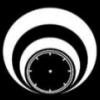
.thumb.jpg.d17ff607fc7e89ed057e63fcb6f2a888.jpg)
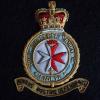

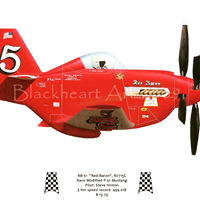
.thumb.jpg.d3635a7ef6507d35f372dd09671fe96f.jpg)

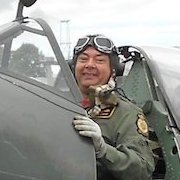

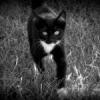
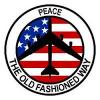
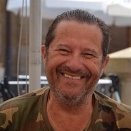
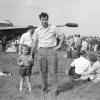
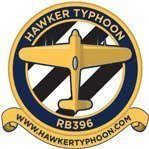
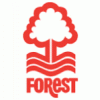
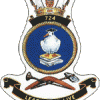

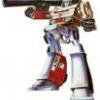
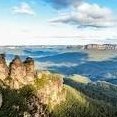
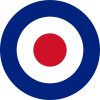
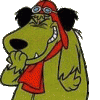

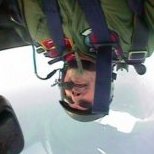
.thumb.jpeg.512869d47e412449d69d30d0295c1ae8.jpeg)

